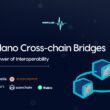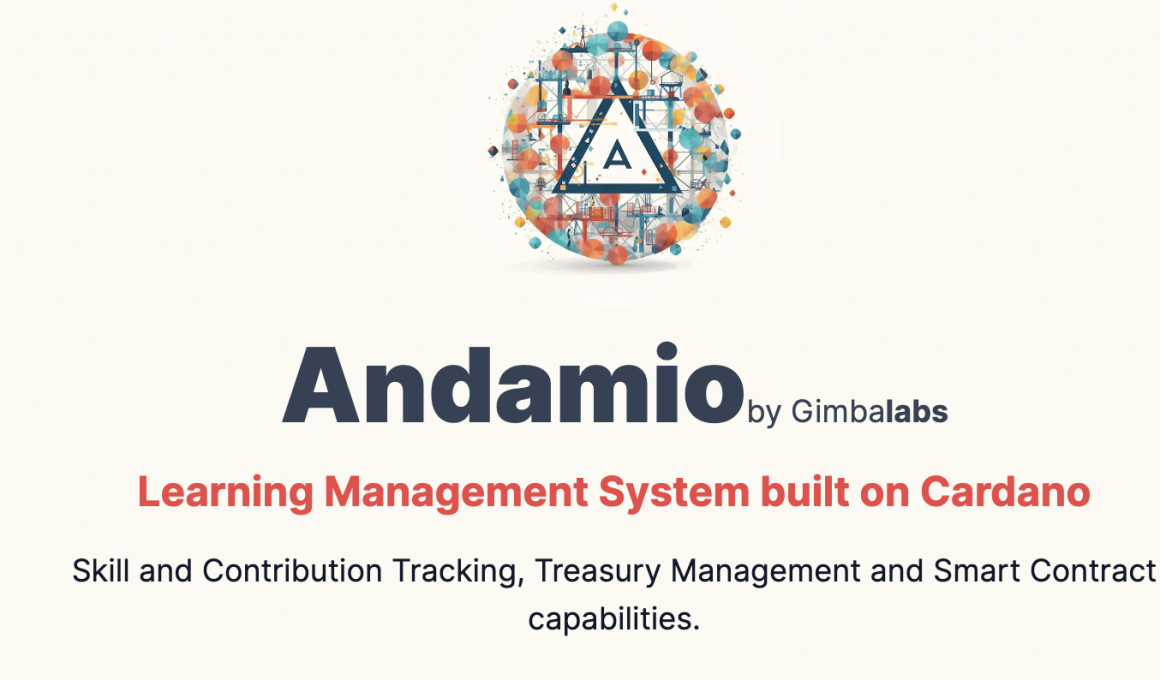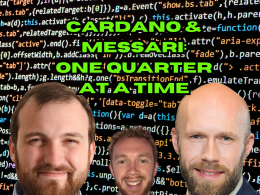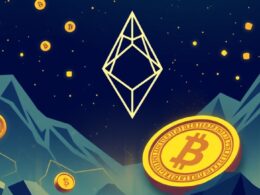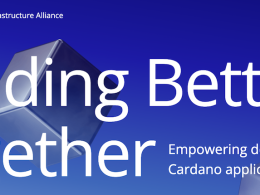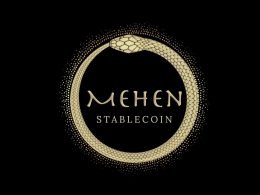Link to Proposal: https://cardano.ideascale.com/c/idea/103298
Proof of Reputation:
Working Product or MVP:
The proposal is spearheaded by Gimbalabs in collaboration with other renowned builders and infrastructure providers within the Cardano ecosystem. This collaboration itself is a testament to the potential and credibility of the project. They are building upon the foundation of the Plutus PBL program, which has already established its presence and value in the community. Given this background, it’s evident that there is not only a proof of concept but also a working foundation that this proposal aims to expand upon.
Previous Proposals and Completions:
The project team has a track record of submitting and executing proposals within the Cardano ecosystem. Their consistent involvement and successful completion of past initiatives underscore their commitment and capability to deliver on their promises.
Context:
Category: Developer Ecosystem – The Evolution
Funds requested: ₳78,960.00
% of category funding: 2.5%
1. Project Description:
This is the introduction of the project proposal, which provides an overall understanding of what the project is about.
- Overview: The project aims to revolutionize the traditional educational system by introducing the “Student Contribution Treasury” based on the Andamio platform. This platform emphasizes a three-step learning process: LearnbyDoing, Collaboration, and Contribution.
- Purpose: The current educational model, designed during the Industrial Era, emphasizes compliance and competition, which often leaves students disengaged and unprepared for real-world problem-solving. This project proposes a solution to bridge this gap by fostering an environment where students actively participate, collaborate, and contribute, thereby finding meaning and relevance in their education.
- Background: Historically, educational systems were built to serve the needs of the industrial sector, focusing on obedience and competition. Such systems, as highlighted in the “Education Problem – Andamio White Paper,” have become outdated and less effective. Many students struggle to find purpose in their learning, leading to decreased engagement. Organizations, in turn, find it challenging to recruit individuals ready for real-world problem-solving. Gimbalabs, recognizing this gap, has been at the forefront of experimenting with a new learning approach since its inception. Their journey, from the early days as Workshop Maybe in 2020, promoting the potential of Cardano tools, to the current Gimbalabs Plutus Project-Based Learning 2023, showcases their commitment to redefining education. The project emphasizes the importance of hands-on learning, collaboration, and contribution, aiming to nurture these concepts in students, preparing them for a future where they are their primary resource. The proposed “Student Contribution Treasury” will be an integral part of this vision, further enhancing the learning experience by integrating real-world incentives and problem-solving opportunities.
2. Project Team:
An understanding of who is behind the project can shed light on their capability to execute it:
The project team comprises a diverse group of professionals with expertise spanning various domains. Here’s a breakdown:
Team Members & Roles:
- PBL Design Team:
- James Dunseith: Teacher, Coach, Smart Contract Developer, and Facilitator. LinkedIn
- Sebastian Pabon: Social Entrepreneur and Educator. LinkedIn
- Software Engineering Team:
- Smart Contract Design Team:
- M. Ali Modiri: Smart Contract Developer. LinkedIn
- Adrian Hüetter: Smart Contract Developer.
- Business Strategy and Product Development Team:
- Community Building and Engagement Team:
- Sebastian Pabon
- Nori Nishigaya
- Project Management:
- James Dunseith
- Roberto Mayen
- Partnerships and go to market:
- Roberto Mayen
- Yoram Ben Zvi
Skills and Expertise:
The team possesses a wide range of skills, from smart contract development, software engineering, and business strategy to community engagement and project management. Their diverse backgrounds ensure a holistic approach to the project, covering all necessary areas for successful execution.
Track Record:
The team has a proven track record, as evidenced by their involvement since Catalyst Fund 1. They have facilitated educational and infrastructure development processes across five continents. Their commitment to the Cardano ecosystem is evident through their contributions, such as the development of tools like Dandelion, the PBL framework, and the Andamio platform. The team’s previous work, combined with their expertise, positions them well to execute the proposed project with high levels of trust and accountability.
3. Project Details:
In-depth information about the project and how it plans to address the issues at hand:
Methodology:
Gimbalabs aims to leverage the tools provided by Cardano to help individuals solve problems and build solutions. Their methodology is rooted in three core principles:
- Learn by Doing: They believe that hands-on experience is the most effective way to learn.
- Collaborate with Others: Collaboration fosters creativity and innovation.
- Contribute to the Solution of Hard Problems: They encourage learners to apply their knowledge to tackle real-world challenges.
Their approach is not just about providing access to education but ensuring that learning is instinctive and meaningful. They emphasize the need for a conducive environment where learners can find meaning and purpose. This methodology is evident in their Gimbalabs Plutus Project-Based Learning 2023 initiative, which is designed as a holistic learning space.
Timeline:
While a specific start and end date are not provided, the proposal mentions their journey from their inception as Workshop Maybe in 2020 to their current initiatives in 2023. This indicates a commitment to long-term development and evolution.
Resources:
The proposal highlights several resources and platforms they’ve developed or are in the process of developing:
- Gimbalabs Plutus Project-Based Learning 2023: A platform that supports the learning-by-doing methodology.
- Andamio Platform by Gimbalabs: A platform built on Cardano with Plutus smart contracts. It offers features like treasury management, skill accreditation, project contribution, and emergent reputation. The Gimbalabs Plutus PBL – Student Contributor Treasury will also be hosted on this platform.
- Student Contributor Treasury: An integrated module that offers students opportunities to engage in problem-solving, teaching, creating modules, and more.
- Gimbalabs Live Coding Session: A format where students can give lessons to their community.
- Gimbalabs Andamio Platform: Provides a Learning Management System (LMS) for onboarding new contributors.
The resources mentioned indicate a comprehensive approach to fostering a learning environment, with platforms and tools that cater to various aspects of the learning journey.
Assessment:
Gimbalabs has a clear and structured approach to achieving its goals. Their methodology is rooted in practical, hands-on learning, collaboration, and contribution. The resources they’ve developed, like the Andamio Platform and the Gimbalabs Plutus Project-Based Learning 2023, are testament to their commitment and capability. The proposal also showcases their track record, highlighting their contributions to the Cardano ecosystem and the open-source community. Overall, the project details are comprehensive, showcasing a well-thought-out plan with a focus on real-world application and community contribution.
4. Impact Assessment:
Understanding the potential impact of the project is crucial for its selection:
Target Audience:
The primary target audience for Gimbalabs appears to be individuals who are keen on learning and contributing to the Cardano ecosystem. This includes budding developers, educators, and other professionals who want to leverage Cardano’s tools and resources. Given the global reach of Cardano and the emphasis on open-source development, the potential target audience is vast, encompassing anyone interested in blockchain technology and its applications.
Measurable Outcomes:
Gimbalabs has a clear focus on measurable outcomes. They have developed their information system, incorporated into the Andamio platform, to track the progress of their students. The outcomes they intend to measure include:
- Visual Data: This encompasses charts, plots, and images that provide a visual representation of the progress and contributions of students.
- Metadata: This is registered through contribution tokens, providing a more granular look at individual contributions and achievements.
Source: https://plutuspbl.io/contributors
Furthermore, the success of their project is also gauged by the success stories of their students, some of whom have become high-level developers, launched their projects, or made significant contributions to the Cardano ecosystem.
Sustainability:
Gimbalabs emphasizes the creation of “superstars” through education. They believe that education can produce individuals who can elevate an ecosystem to the next level. By providing a platform for learning and collaboration without barriers to entry, they aim to continuously attract and nurture talent. Their educational process is described as a “tunnel” that leads directly into the Cardano development ecosystem, indicating a continuous flow of talent and contribution. This approach ensures that the impact of their project is sustained in the long term, as new learners are constantly onboarded, educated, and integrated into the Cardano community.
Gimbalabs has a clear vision of the impact they wish to create within the Cardano ecosystem. Their focus on education as a tool to nurture talent and drive contributions is commendable. The use of their information system to measure outcomes showcases their commitment to transparency and continuous improvement. Their approach ensures that the benefits of their project extend beyond its completion, fostering a sustainable impact on the Cardano ecosystem. The emphasis on sharing outputs and results publicly further underscores their commitment to open-source principles and community engagement. Overall, the project demonstrates a strong potential for positive impact, both in the short and long term.
5. Risk and Contingency Planning:
Every project faces potential risks and challenges. How are these addressed?
Risk Identification:
- A decrease in the number of individuals interested in becoming Cardano developers.
- Technical challenges or limitations associated with the Treasure management system of the Andamio platform.
- Changes in the Cardano ecosystem that might affect the relevance or applicability of Gimbalabs’ educational approach.
Risk Mitigation: Gimbalabs plans to validate the feasibility of their approach by measuring the volume of activity registered by the Treasure management system of the Andamio platform. This will allow them to determine engagement levels and measure trends in student contribution. By monitoring these metrics, they can identify areas of interest and potentially adapt their educational approach to better cater to the needs and interests of their students.
Contingency Plans: While specific contingency plans are not provided in the information, the emphasis on monitoring and measuring the volume of activity suggests that Gimbalabs is prepared to adapt and modify its approach based on real-time feedback and data. This data-driven approach can serve as a foundation for developing contingency plans as needed.
While Gimbalabs has a clear vision and method for validating the feasibility of their approach, the provided information lacks explicit details on risk identification and contingency planning. It would be beneficial for Gimbalabs to further elaborate on potential risks and challenges, as well as outline specific contingency plans to address these risks. This would provide a more comprehensive understanding of their preparedness to handle unforeseen challenges and ensure the project’s success. However, the interview with members of the project team gave clarity in this regard ( see section 7 of this article: Q&A)
6. Budget Estimation:
A breakdown of the project’s budget provides insight into its financial feasibility:
Detailed Budget: The project has a total budget request of 78.960 ADA for 5 months. This equates to a monthly budget of 15.792 ADA allocated for rewarding student “commitments”. The commitments that students can choose from are categorized and may vary in complexity.
The cost for hourly session time commitments (type a and d) is standardized at 50 ADA per hour. For other commitments like code development (type b), lesson or PBL module creation (type c), and documentation development (type e), the cost cannot be standardized and will be evaluated between the assigned teacher and the student. However, there’s a cap, ensuring that the commitment assigned to a student does not exceed 200 ADA.
Monthly Commitment Estimation:
- Ideal Conditions: If the complexity of commitments is around 100 ADA each.
- Potential Allocation: Almost 7 times more incentives to students, increasing the number of teaching hours and contributions in code creation, module and lesson creation, and documentation generation.
Funding: The project will be funded through the requested budget of 78960 ADA. The funding will be used to incentivize student commitments, with a monthly allocation of 15792 ADA. The proposal suggests that in ideal conditions, where the complexity of commitments is around 100
7. Q&A with James and Roberto
Q1: How do you plan to generate revenue with this project?
A: Our project recognizes the significant financial investments made, especially in the US, towards in-house training programs and the recruitment-to-hiring process. The overheads in time, resources, and capital are substantial, running into billions of dollars. Our unique approach to onboarding will reduce this overhead dramatically. Additionally, we designed our platform to be versatile, offering various customizable features that allow it to adapt to any organization’s specific needs.
Regarding the attainment of financial sustainability, while we have yet to pin down a singular strategy, we’re exploring multiple avenues ranging from micro-fees to transactions to specialized products and services. For instance, we can provide premium services to those who lack the know-how to implement their Project-Based Learning (PBL). Our expertise in PBL positions us uniquely to offer such services.
Our confidence in PBL as a revenue generator isn’t just theoretical; it’s validated through years of practical application. We’ve seen firsthand its effectiveness in engaging and motivating learners from diverse backgrounds. Some of our learners, unfamiliar with even basic tech concepts like CLI or GitHub, have been nurtured and supported by their peers, all thanks to the PBL environment. This learner-centric approach, where the educator acts as a facilitator, promotes deep, meaningful learning. It encourages learners to question, understand, and internalize concepts, rather than just superficially adopting new technologies because they’re the latest trend.
For instance, in our PBL sessions, we delve into topics like the significance of digital IDs in the context of decentralized technology. Such discussions ensure that learners don’t just adopt technology blindly but understand its underlying importance.
Our approach to education, rooted in PBL, offers a fresh perspective, especially when traditional educational systems fail to address current and future up-skilling and reskilling challenges. By emphasizing creativity, communication, and collaboration, we aim to foster essential skills for the present and future.
Q2: How are you currently financing your activities?
A: Our financing strategy is primarily driven by intrinsic motivation rather than extensive financial incentives. However, we recognize that rewarding valuable work by contributors is essential. One of the key elements we’ve introduced is the “contributor token,” which represents a participant’s accomplishments and contributions over time.
This token, inspired by CIP-68, is an on-chain reference legible to smart contracts. This token allows us to validate and grant access, rights, and privileges based on an individual’s contribution record.
This token is a testament to one’s learning journey and achievements. Our vision is to make it a gateway to tangible financial opportunities in the near term. Once we link these tokens to real income from treasuries, it will significantly boost engagement.
However, this also brings forth challenges and questions. For instance, what if someone tries to game the system or sell their access token? These are the exact challenges we want our students to ponder upon, as they delve into deeper issues like identity in the blockchain space.
The decision of whether to retain or sell these tokens will be a testament to the health and resilience of our network. If a majority retain their tokens, it indicates a strong commitment to the network. Conversely, if many choose to sell, it suggests that the network’s ties aren’t strong enough, prompting us to re-evaluate and enhance engagement strategies.
In essence, while our current financing is not heavily reliant on substantial financial incentives, we are continuously exploring ways to intertwine intrinsic motivation with tangible rewards, ensuring sustained engagement and growth.
Q3: How do you plan to attract and win new developers to conduct the program?
A: Our approach to attracting and winning new developers for the Plutus PBL program is multifaceted and rooted in the program’s inherent flexibility and inclusivity. Contrary to what the name might suggest, Plutus PBL is not solely about Plutus. It offers a comprehensive overview of the entire ecosystem, allowing participants to carve out their unique paths. This holistic approach can be likened to a role-playing game like World of Warcraft, where participants can assume various roles, thereby creating myriad opportunities.
One of the program’s strengths is its ability to integrate other organizations into its fold. For instance, Mesh is currently developing its module within Plutus PBL. This fractal structure ensures that participants, upon entering through Plutus PBL, gain exposure to the broader ecosystem. This strategy not only prevents saturation of specific pathways but also fosters a diverse talent pool. Initially, while our focus was primarily on developers, we’ve since seen an influx of individuals from various backgrounds, including product development, management, and community management.
Our program is not just about coding or Plutus PBL. We’ve created multiple spaces like the Gimbalabs Playground and Live Coding sessions, offering opportunities for those interested in teaching, mentoring, or even leading discussions. We believe this model can be replicated across organizations, ensuring we onboard a diverse range of individuals, not just a specific type.
Our approach is to present the problem and encourage participants to propose solutions. This method allows individuals to carve out their unique paths, capitalizing on their strengths and interests. For instance, while I embarked on the Plutus PBL journey with the intent to learn Haskell, after going through the onboarding module, I saw an opportunity to share this knowledge with the Latin American community. The program I created simplifies onboarding non-tech individuals to Cardano, teaching them the basics of Web3 wallets, a crucial entry point for many.
In essence, our strategy is to provide a broad overview through a structured program, allowing participants the freedom to delve deep into areas of their interest. Whether they choose to specialize within the program or take their acquired knowledge elsewhere, the Plutus PBL ensures they are well-equipped to make informed decisions.
Q4: What do you perceive as the biggest risks or challenges facing your project?
A: One of the primary challenges we foresee in executing this proposal is the sustainability of our staff and team. As we delved deeper into the proposal writing process for Catalyst, it became evident that our main cost driver was our team. We are fortunate to have some of the brightest minds in the ecosystem, including top-tier smart contract developers. Their dedication and commitment to the project, even without immediate financial incentives, have been commendable. They’ve invested significant time and effort over the past six months, driven purely by their belief in the project’s potential and its importance to the ecosystem.
However, this model is not sustainable in the long run. While passion and commitment are invaluable, there is a practical need for funding to ensure that we can retain this talent and continue our work. Whether this funding comes from Catalyst or other sources, securing it is crucial for our project’s continuity.
Another significant challenge we anticipate is adoption. Innovation isn’t solely about creating groundbreaking technology; it’s also about ensuring that it is embraced and utilized by the intended audience. The true success of any innovative solution lies in its widespread acceptance and integration into daily practices.
For our project, this means not only introducing our platform to potential users but also ensuring they understand its value, benefits, and how it can transform their current processes. Given the innovative nature of our project, there’s a learning curve involved. Users need to familiarize themselves with new concepts, methodologies, and tools that might be vastly different from what they’re accustomed to. This requires a combination of effective communication, training, and support.
Moreover, the challenge of adoption is compounded by the fact that we’re introducing a paradigm shift in how people perceive education, organization, and information dissemination. Changing entrenched beliefs and practices is never easy. It requires consistent efforts in terms of outreach, education, and demonstrating tangible benefits.
To address this, we plan to invest significantly in community engagement, workshops, and training sessions. We aim to create a robust support system where users can easily access resources, ask questions, and share feedback. Collaborative feedback loops will be essential to iterate and improve our offerings based on real-world user experiences.
In addition, partnerships will play a crucial role in driving adoption. By collaborating with established entities and influencers in the ecosystem, we can leverage their reach and credibility to introduce our platform to a broader audience. Such collaborations can also lead to valuable insights and refinements to our project, ensuring it remains relevant and beneficial to its users.
Q5: If Catalyst funding were to cease, how do you envision the continuation of the project?
A: The sustainability and continuation of our project, even in the absence of Catalyst funding, is a matter of utmost importance to us. Our team, comprising some of the most talented individuals in the ecosystem, has been working diligently on this project out of sheer passion and belief in its potential. Their dedication, even without immediate financial incentives, is a testament to the project’s significance.
While Catalyst funding has been instrumental in our journey, our team’s commitment and the inherent value of our project will drive us to seek alternative means to ensure its continuation and success.



